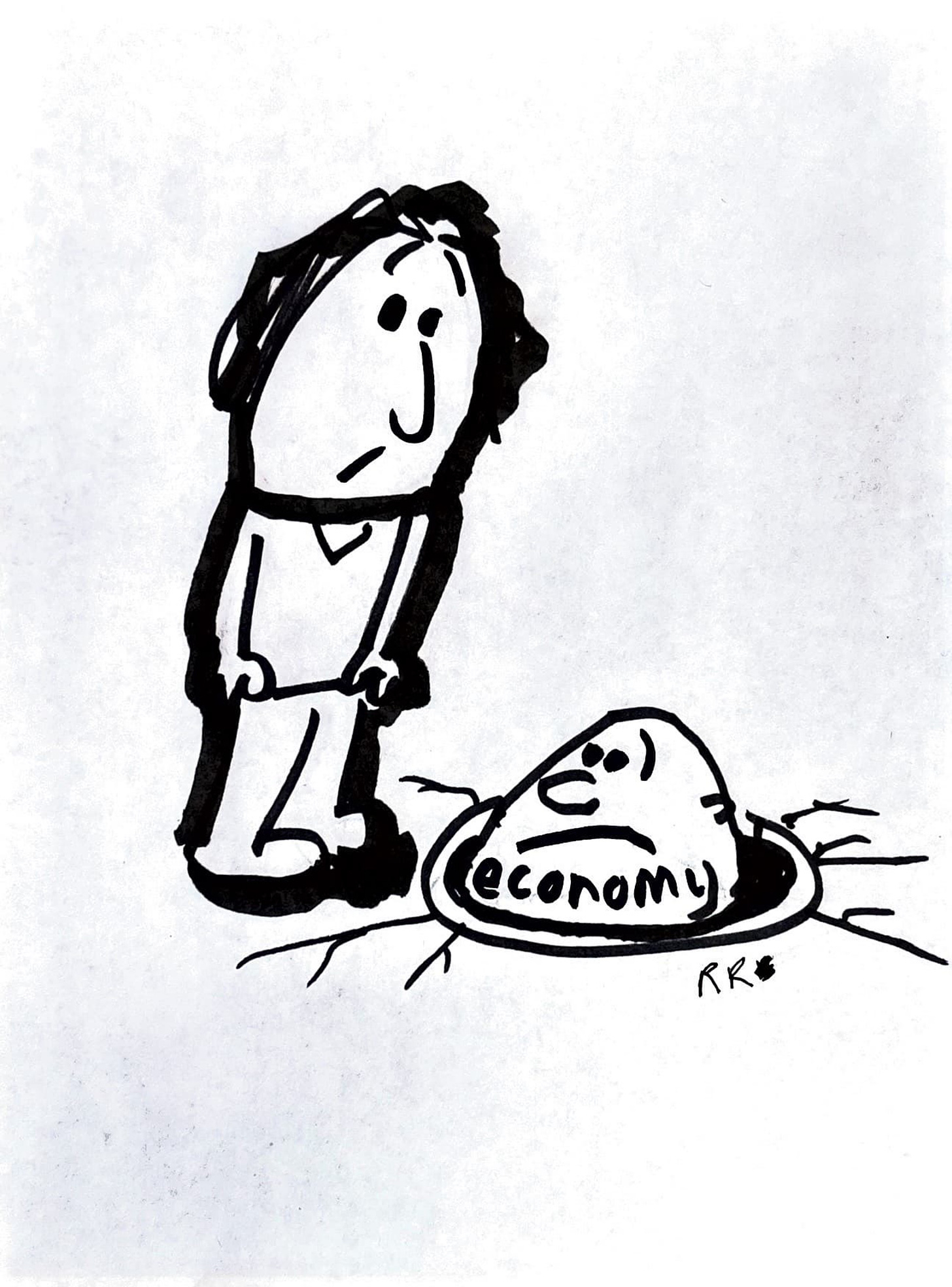The Labor Department reported Friday that U.S. employers added 528,000 jobs in July, more than twice the number analysts had expected. And the rate of unemployment dipped to just 3.5 percent.
Undeniably good news.
But this good news also means the Federal Reserve will almost certainly keep raising interest rates, believing the job market is now too “tight.”
This is not good news.
The Fed is wrong: The job market is not too tight. In fact, the share of Americans working or actively looking for work fell in July to its lowest level of the year — presumably because fewer people believe it worthwhile to work. This is because of (1) the rising costs (and hassles) of childcare and eldercare, and (2) the continuing drop in inflation-adjusted wages. Wages are rising at an annual rate of 5.2 percent but inflation is rising at over 9 percent. Which means that, in terms of real purchasing power, the pay of most workers continues to plummet.
You’d think that the stall in the size of the workforce and the decline in inflation-adjusted wages might cause the Fed to hit the pause button on further interest-rate increases. But the Fed is still wedded to the anachronistic view that a “tight” jobs market is pushing prices upward.
Rubbish. The real inflationary culprits are global supply constraints and big corporations with the power to raise prices.
So beware. The Fed is likely to continue to raise interest rates when it meets in September. This means middle and lower-income Americans will be hit with two simultaneous shocks: not just shrinking paychecks they’re now enduring, but also a slowing economy in which they are the first to lose hours and jobs.
Lower-income workers have little room reduce their spending because a large portion of their family budgets already goes to the necessities of food and housing — both of whose prices are soaring. Many are coping by taking on more credit card debt, which is also becoming more expensive as the Fed raises interest rates.
So don’t be misled by the headlines. Yes, overall consumer spending is still going gangbusters. But most of it is coming from the upper middle class. The top 40 percent of the income distribution now accounts for around 60 percent of spending; the bottom 40 percent, about 22 percent. As the Fed slows the economy, the bottom 40 percent are getting squeezed even more.
Yes, job growth is booming as well. But the sheer number of jobs is not a sufficient measure of the strength of the economy, especially when the real wages attached to so many of them are dropping. It is no great feat to create an abundance of low-wage jobs.
The Fed is poised to make all this worse for lower-income Americans. Inequality in America is already horrific. Why worsen it?
In the first three decades after World War II, America produced the largest middle class the world had ever seen. Most jobs continued to pay more and more. Almost all Americans were on an upward escalator.
But for the last three decades, the middle class has been shrinking, and only the classes surrounding them have been growing — the “have-mores” and the “have-lesses.” The have-lesses — most of whom don’t have college degrees and are paid in hourly wages and — have been in a slow-motion recession. If they’re white and without college degrees, they’ve been losing ground fastest of all. Adjusted for inflation, their pay and benefits today are lower than they were in 1990. They also have less job security. In 2016, they formed the core of Trump’s base, and are still among his most ardent supporters.
The biggest threat to our economy and society is no longer inflation or recession, per se. The biggest threat is a large and growing class of have-lesses — slammed by the double-whammy of a slowing economy and declining real wages. The Fed must not harm them further by taming inflation on their backs.





















Share this post